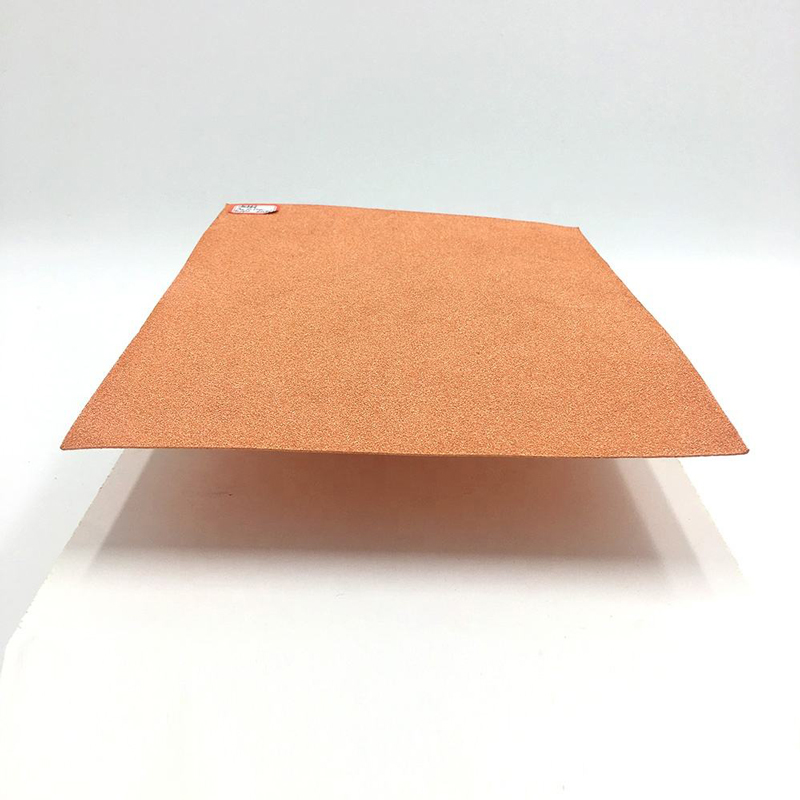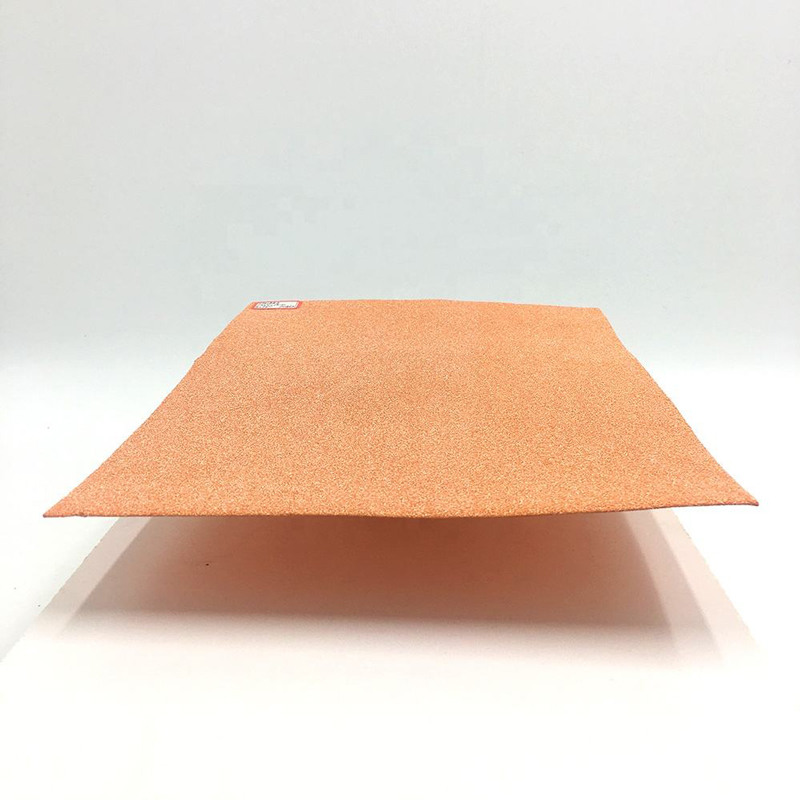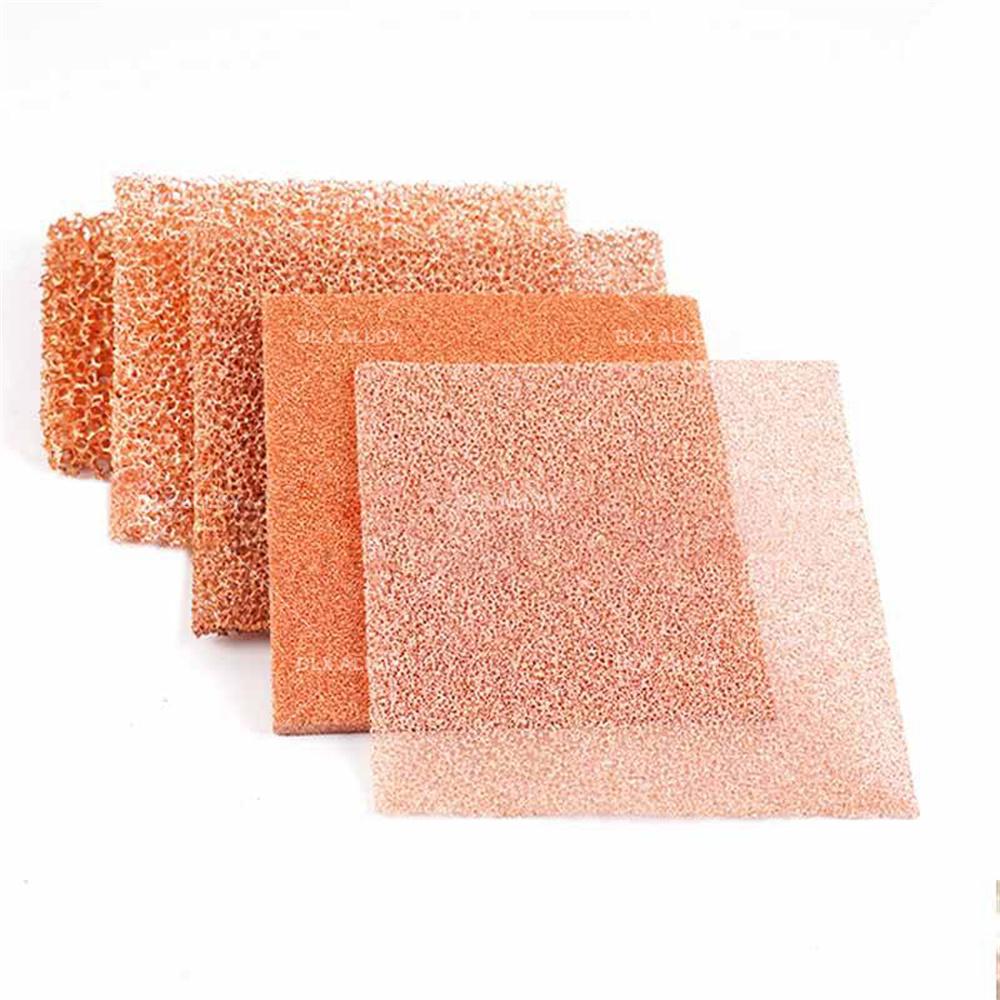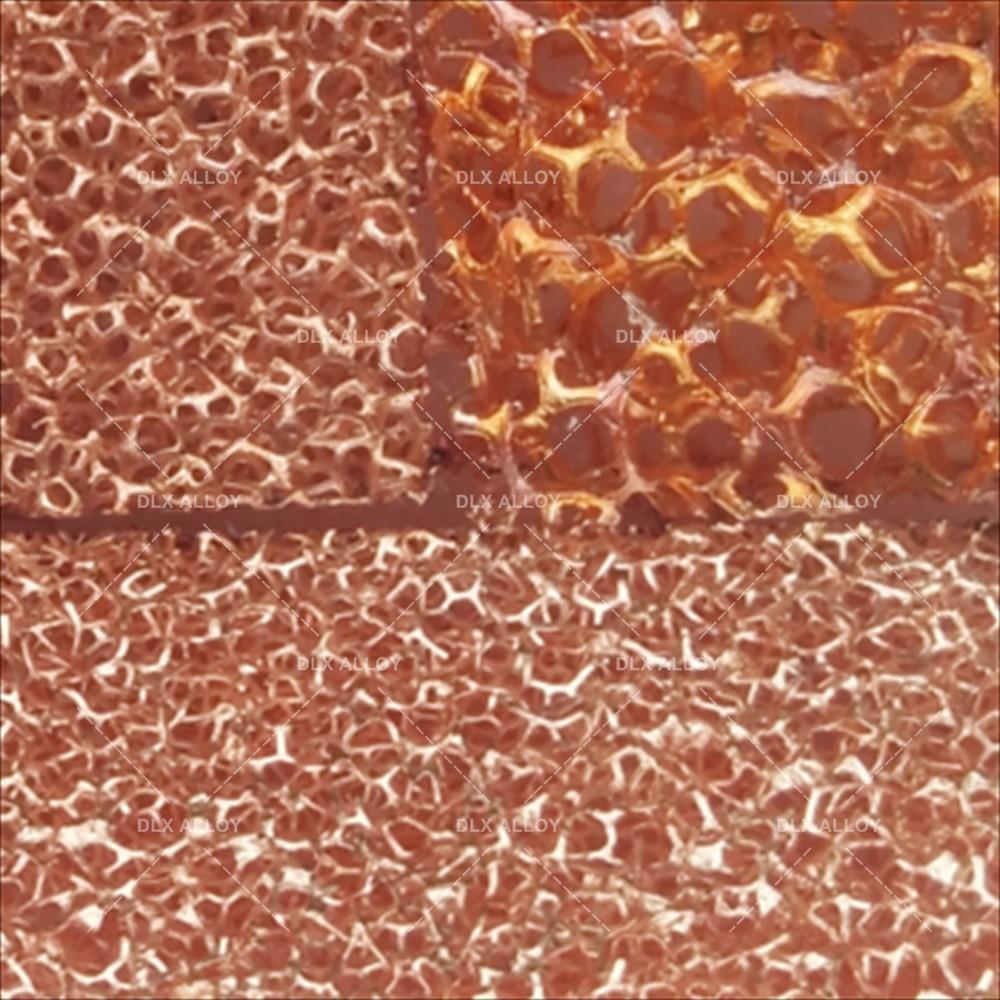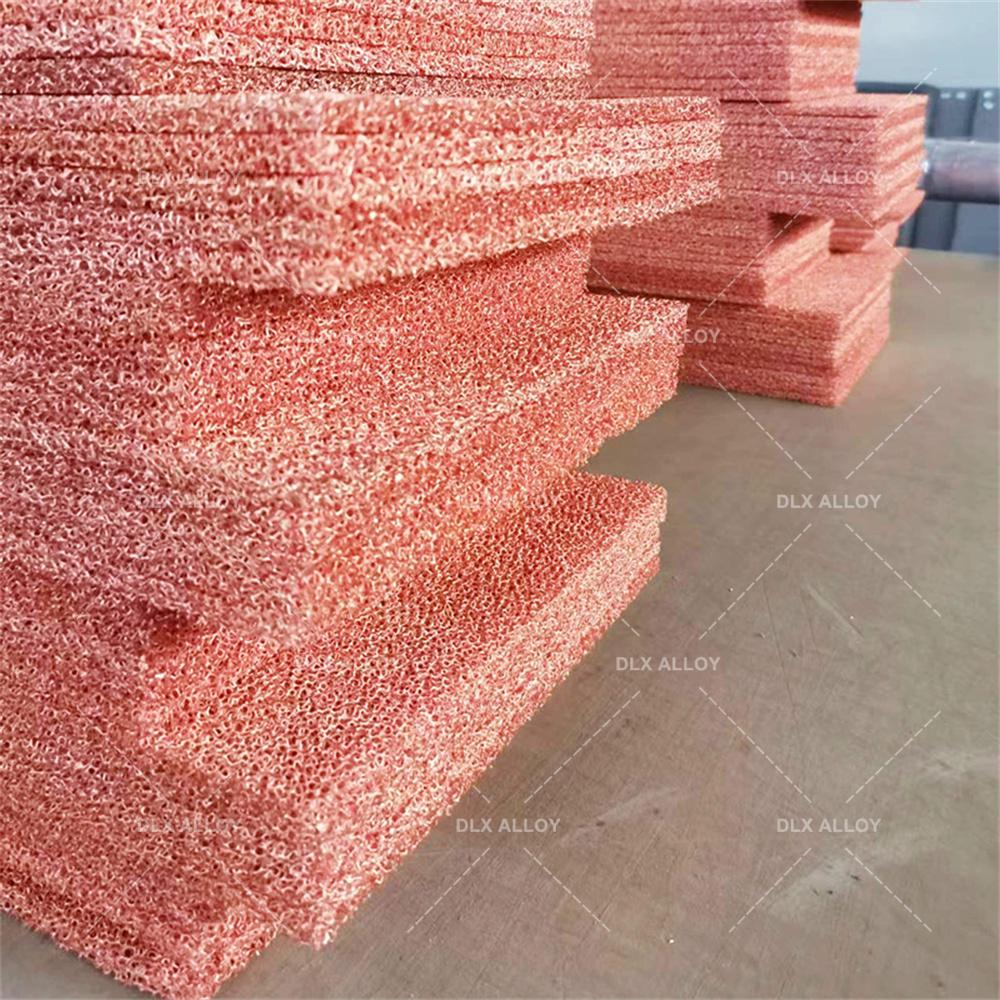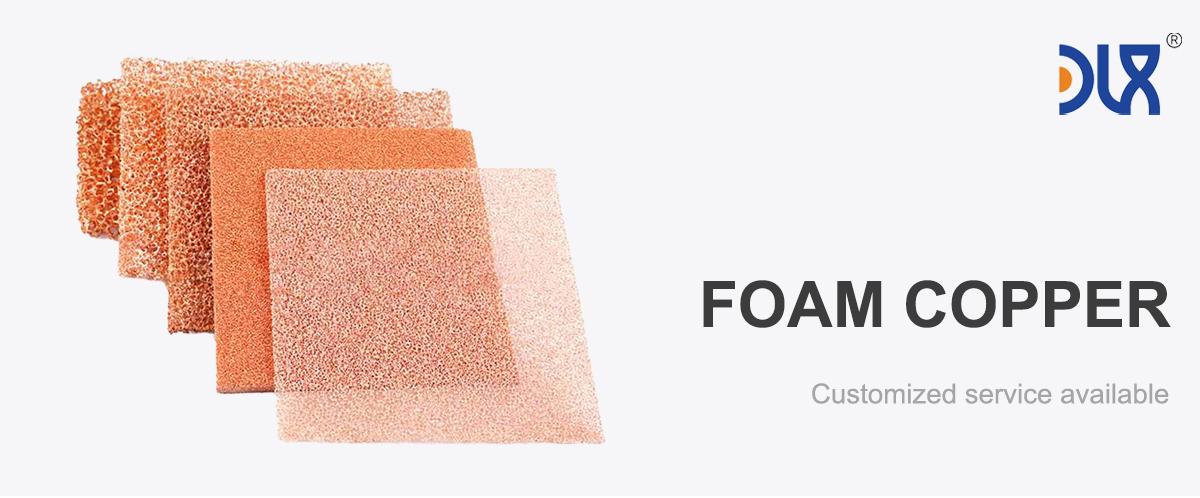
Our Copper Foam rolls are a game-changer for battery research and development, offering a lightweight, highly porous material for cutting-edge electrode prototyping. Designed for flexibility and performance, they’re transforming how industries and researchers innovate in energy storage. Let’s dive into what makes our copper foam rolls special, explore their applications, unpack industry trends, and show why we’re leading the way in battery R&D solutions.
For more details, pls directly contact us.
Our copper foam rolls are high-purity, porous copper materials with a three-dimensional, open-cell structure, boasting up to 95% porosity. Weighing just 0.5-1.5 g/cm³, they’re ultra-lightweight yet durable, perfect for lab-scale battery experiments. Their high electrical conductivity boosts electrode performance, while the porous design provides a massive surface area for ion transport and energy storage. The roll format offers flexibility, making it easy to cut and shape for custom electrode designs. We craft them using advanced electrodeposition and 3D printing, allowing us to customize pore size and density to fit your research needs. Whether you’re testing lithium-ion batteries or exploring solid-state designs, our foam rolls deliver top-tier results.
For more details, pls directly contact us.
Battery research is all about pushing the limits of energy storage, and our copper foam rolls are built to make that process faster and more effective. Their high porosity maximizes electrode surface area, enabling faster ion transport and higher energy density. The excellent electrical conductivity reduces internal resistance, boosting efficiency in prototypes. The lightweight design cuts weight in test setups, mimicking real-world applications like EVs or portable devices. The roll format is a big win for researchers, offering flexibility to create custom electrode shapes without sacrificing performance. Plus, the foam’s thermal conductivity and corrosion resistance ensure reliable results in demanding lab conditions. This mix of versatility, efficiency, and durability makes our foam rolls a must-have for battery innovation.
Industry Analysis: The Copper Foam Market Surge
The copper foam market is booming, driven by the global push for advanced energy storage solutions. Valued at $180.5 million in 2023, it’s projected to hit $246.7 million by 2030, growing at a CAGR of 5.42%. The rise of electric vehicles (EVs) and renewable energy systems is a major driver, as researchers seek high-performance materials for next-gen batteries and supercapacitors. Academic labs, battery manufacturers, and electronics industries are adopting copper foam for its versatility in R&D. The push for solid-state and lithium-sulfur batteries is also fueling demand for flexible, high-efficiency electrode materials.
Sustainability is reshaping the market. Environmental regulations and consumer demand for green solutions are pushing researchers toward recyclable materials and eco-friendly production. Our copper foam rolls fit perfectly—they’re fully recyclable and made with energy-efficient processes. Innovations like nanostructured foams and 3D printing are opening new possibilities, allowing us to create tailored structures for specific research needs. As the industry prioritizes efficiency, versatility, and sustainability, our copper foam rolls are poised to lead battery R&D.
Applications: Where Our Copper Foam Rolls Shine
Our copper foam rolls are a versatile solution, delivering results across a range of battery R&D applications:
-
Lithium-Ion Battery Testing: They enhance electrode performance in lab-scale lithium-ion batteries, improving energy density and cycle life.
-
Supercapacitor Research: The foam supports high-performance electrodes for rapid charge/discharge studies in EV and grid applications.
-
Solid-State Battery Development: Its flexibility aids prototyping of next-gen solid-state battery designs for safety and efficiency.
-
Energy Storage Prototyping: Our rolls enable testing of novel battery chemistries for renewable energy and grid storage.
-
Portable Device Batteries: They support R&D for compact, high-efficiency batteries in smartphones and wearables.
-
Electrochemical Studies: The foam is ideal for lab experiments in battery materials, catalysts, and energy storage systems.
Industry Trends: What’s Driving Copper Foam Forward
The copper foam market is moving fast, and we’re staying ahead of the curve. Here are the trends shaping the industry:
-
Next-Gen Battery Focus: The push for solid-state and high-energy-density batteries is driving demand for versatile electrode materials.
-
EV and Renewable Energy Surge: The rise of EVs and solar/wind systems is fueling R&D for efficient energy storage solutions.
-
Sustainability Push: Eco-friendly production and recyclable materials are must-haves, and our foam aligns with sustainable manufacturing.
-
Nanostructured Foams: Advances in nanotechnology are enabling ultra-high-surface-area foams, boosting R&D performance.
-
Customization Demand: 3D printing and electroforming let us tailor foam structures for specific research needs.
-
Electronics Growth: The expansion of IoT and wearables is driving demand for compact, high-performance battery materials.
Why Choose Our Copper Foam Rolls?
We’re not just making copper foam rolls—we’re crafting tools that fuel battery innovation. Here’s why our rolls stand out:
-
High Porosity: With up to 95% porosity, our foam maximizes electrode efficiency for faster charging and higher capacity.
-
Superior Conductivity: High electrical conductivity reduces resistance, boosting performance in battery prototypes.
-
Flexible Design: The roll format allows easy cutting and shaping, perfect for custom R&D electrode designs.
-
Lightweight Strength: At 0.5-1.5 g/cm³, our foam cuts weight without sacrificing durability, ideal for real-world simulations.
-
Eco-Friendly Edge: Fully recyclable and produced with sustainable methods, our foam aligns with green research goals.
-
Expert Support: Our team partners with you from concept to testing, offering expertise to tackle your toughest R&D challenges.
Comparison Parameters Table
|
Parameter |
Copper Foam Rolls |
Carbon Films |
Metal Foils |
Polymer Substrates |
|---|---|---|---|---|
|
Electrical Conductivity |
High (excellent for electrodes) |
Moderate (higher resistance) |
High (but less porous) |
Low (non-conductive) |
|
Porosity |
High (up to 95%, customizable) |
Low (limited surface area) |
None (solid structure) |
High (but inconsistent) |
|
Weight |
Lightweight (0.5-1.5 g/cm³) |
Lightweight (but less durable) |
Heavy (denser than copper foam) |
Lightweight (but less durable) |
|
Flexibility |
High (easy to cut/shape) |
Moderate (less adaptable) |
Low (rigid structure) |
High (but degrades easily) |
|
Corrosion Resistance |
Good (resists electrolytes) |
Good (degrades over time) |
Moderate (prone to corrosion) |
Poor (degrades in chemicals) |
|
Mechanical Durability |
High (handles lab testing) |
Low (brittle under stress) |
Moderate (less durable than foam) |
Low (deforms under stress) |
|
Recyclability |
Fully recyclable |
Limited (degrades over time) |
Recyclable (energy-intensive) |
Limited (degrades over time) |
|
Cost-Effectiveness |
Moderate (long lifespan, high performance) |
Low (frequent replacements needed) |
Moderate (less versatile) |
Low (short lifespan) |
Our copper foam rolls outperform other materials for battery R&D. Carbon films are lightweight but lack the durability and conductivity needed for high-performance prototypes. Metal foils are conductive but heavy and non-porous, limiting electrode efficiency. Polymer substrates are flexible but degrade in electrolytes and heat. Our copper foam rolls hit the sweet spot: ultra-high porosity, lightweight design, superior conductivity, and unmatched versatility, all backed by sustainable production.
We go beyond the product itself. Our end-to-end support—from custom design consultations to lab integration—ensures you get the most out of our foam. Our advanced manufacturing techniques, like electrodeposition and 3D printing, deliver consistent quality and tailored solutions that competitors can’t match.
Looking to the Future
The future of copper foam rolls for battery R&D is electric, and we’re excited to lead the charge. As the push for next-gen batteries intensifies, the demand for high-performance, sustainable materials will skyrocket. We’re investing heavily in R&D to push the boundaries of what our foam can do, from nanostructured designs for solid-state batteries to high-density options for grid storage. Our commitment to sustainability means we’re constantly refining our processes to reduce waste and energy use, aligning with global environmental goals.
Our copper foam rolls aren’t just a material—they’re a catalyst for battery innovation. They’re lightweight, versatile, and built to power the next generation of energy storage solutions. Ready to take your research to the next level? Let’s talk about making it happen.
For more details, pls directly contact us.
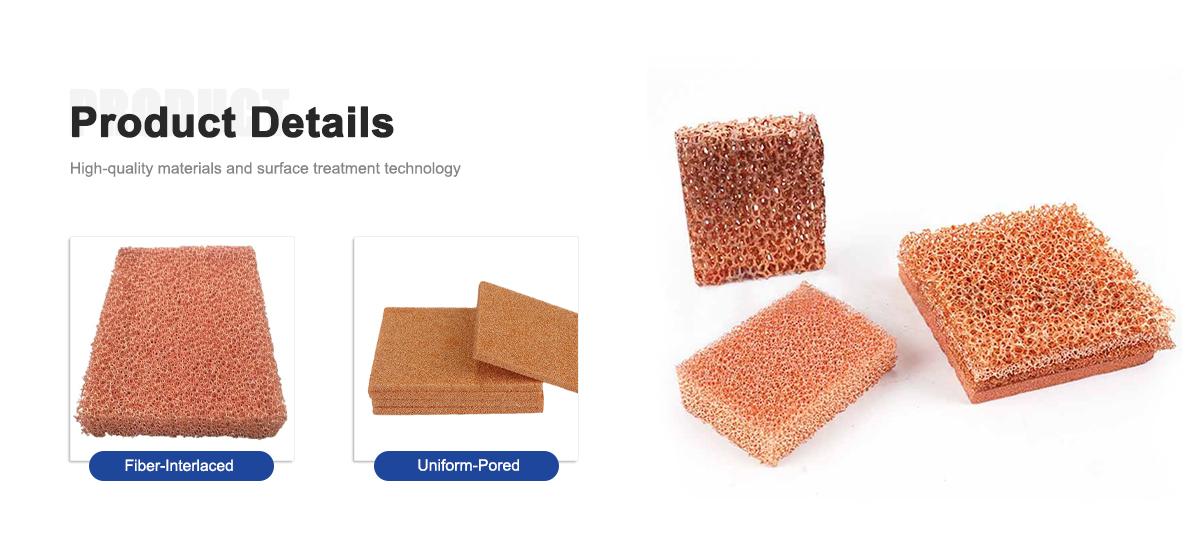
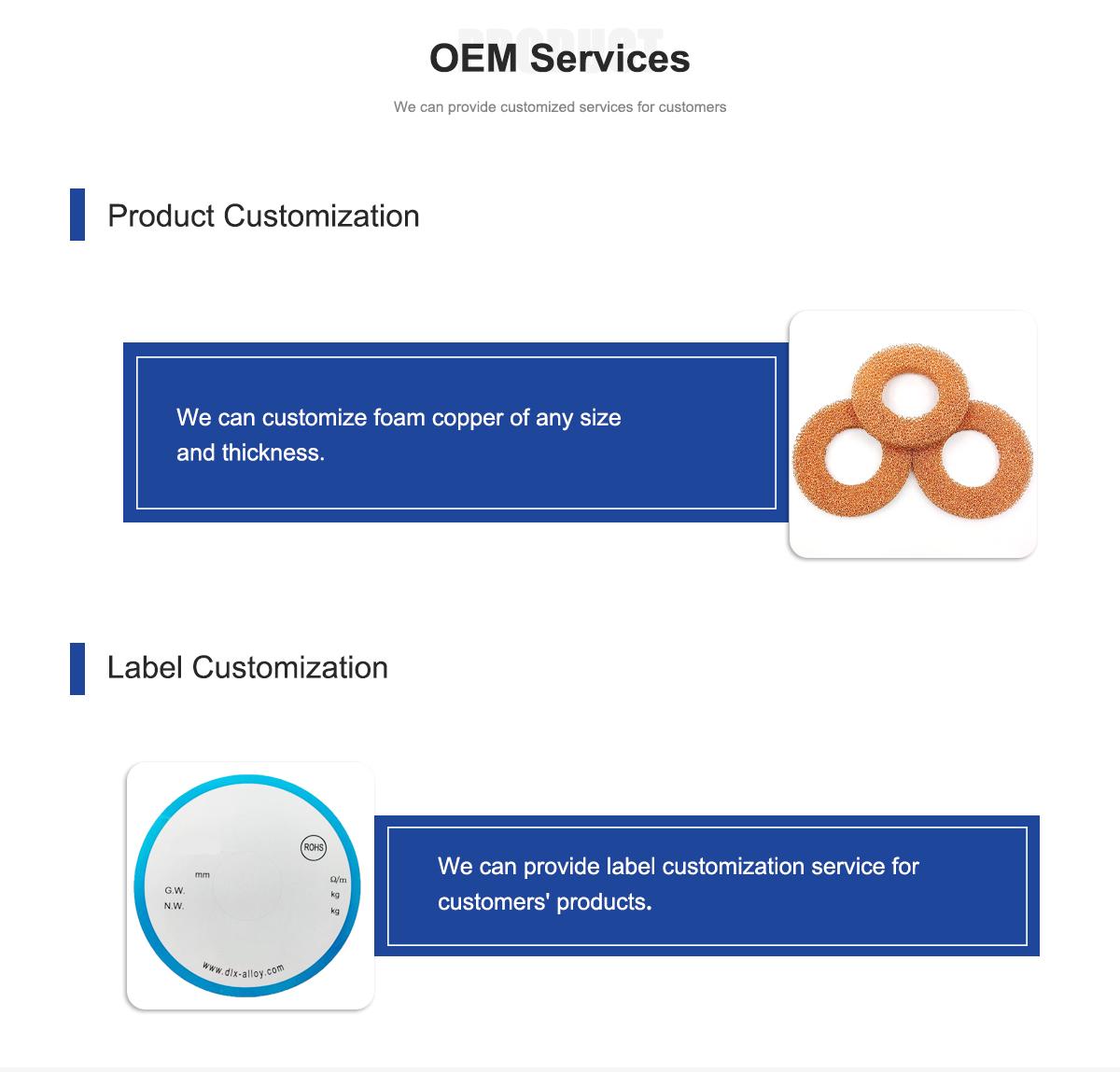
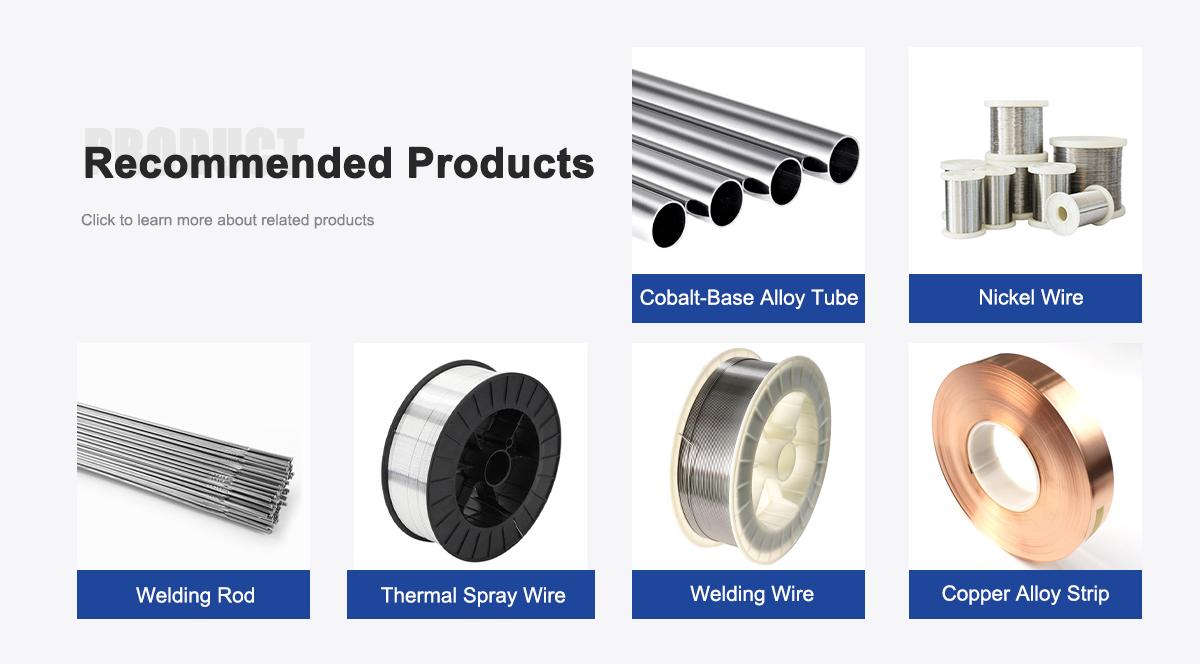
About Us:
Our 12,000㎡ factory is equipped with complete capabilities for research, production, testing, and packaging. We strictly adhere to ISO 9001 standards in our production processes, with an annual output of 1,200 tons. This ensures that we meet both quantity and quality demands. Furthermore, all products undergo rigorous simulated environment testing including high temperature, high pressure, and corrosion tests before being dispatched, ensuring they meet customer specifications.
For all our clients, we offer timely and multilingual after-sales support and technical consulting, helping you resolve any issues swiftly and efficiently.

Client Visits
Building Stronger Partnerships

We support all kinds of testing:


FAQs:
-
What are copper foam rolls for battery R&D?
They’re lightweight, porous copper-based rolls designed as electrode materials for battery research and development. -
How do copper foam rolls benefit battery research?
Their high porosity and conductivity enable rapid prototyping and testing of high-performance battery electrodes. -
Which industries use these copper foam rolls?
Battery manufacturing, electric vehicles, renewable energy, electronics, and academic research rely on them for R&D. -
Why are rolls ideal for battery R&D?
The flexible roll format allows easy cutting and shaping for custom electrode designs in lab-scale experiments. -
What are the key applications of these rolls?
They’re used in lithium-ion battery testing, supercapacitor research, solid-state battery development, and energy storage prototyping. -
How do copper foam rolls compare to other materials?
They offer higher porosity, better conductivity, and greater flexibility than alternatives like carbon films or metal foils. -
What are the latest trends in copper foam for battery R&D?
Growing focus on next-gen batteries, nanostructured foam advancements, and sustainable production are driving growth. -
Are these copper foam rolls eco-friendly?
Yes, they’re fully recyclable, support clean energy research, and are produced with sustainable methods.

